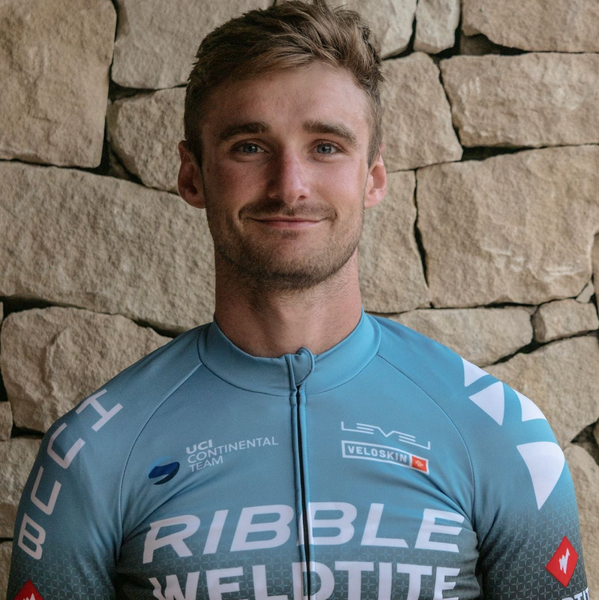
Clip in. Focus. Go! These are the last preparatory steps in attempting to break the cycling 1-hour record. The months and years of hard-work, dedication and training will all culminate in an exhaustive effort over the next 60-minutes.
The 1-hour record attempt is an all-out unrefined test of a cyclist’s physical and mental capacity to see how far they can travel over the course of 60 minutes. The record has long been seen as the ultimate and purest challenge within endurance track-cycling. But what are the determining factors for breaking the record? Type of track? Aerobic capacity? Air density and aerodynamics? Sure. These are all elements that contribute towards the marginal gains for an athlete. But more questions remain about the neuromuscular factors at play and electromyography (EMG) may be able to provide some of those answers.
Speculative qualitative feedback can be made from rider self-assessments on how their muscles “feel” during a race. However, with wearable technologies, quantitative, in-race, muscle activation data can provide a neuromuscular assessment to coaches and athletes.
We provided EMG data from our wireless sensor technologies to Dan Bigham and Joss Lowden during a training session in preparation for a 1-hour record attempt.
The uses of EMG for cycling performance
Dan and Joss had their individual targets. Dan was aiming to break the British record held by Sir Bradley Wiggins’ distance of 54.526km and Joss was looking to take the world record held by Vittoria Bussi’s distance of 48.007km. Both would require a monumental effort and optimizing every level of performance would be critical.
During a training session in preparation for the 1-hour record attempt, Delsys Trigno Avanti sensors were connected to several of the key power generating muscles with the aim of informing and fine-tuning the very small margins it takes to break records.
Both Dan and Joss are supported by Mehdi Kordi, who’s background is in neuromuscular performance of elite cyclists. Mehdi gave us an insight into how EMG data can be implemented into a strategic plan for enhancing power production in cycling.
EMG data enables us, as coaches, an understanding into a variety of metrics about neuromuscular performance. The in-race data allows a critical evaluation of the onset of fatigue and how this may alter mechanics and the recruitment of muscles towards power generation.
We are also able to assess any asymmetries that occur between limbs and how this might translate into the loss of power or a sub-optimal riding technique.
Neither Joss nor Dan had received feedback on their neuromuscular recruitment strategies before. Dan, as an avid aerodynamicist, gave his thoughts on the data that can be obtained from the wearable EMG sensors.
“I have always looked to reduce the resistance caused by the air. This has been managed through optimizing my position, clothing and equipment choices. These interventions effectively reduce the power demands to ride at record speed.
After controlling these elements, it was important to focus on the biomechanical factors that would increase the generation of propulsive force, effectively increasing my available power for the entire duration. This is where the EMG sensors allowed us to gather further information into optimizing muscle force production, especially in the latter stages of the race when fatigue may start to kick in.”
Transferring knowledge to application


8 months on from the trial run using the Delsys EMG sensors, Joss and Dan were ready to face their respective challenges. All the preparation had come down to this moment.
After an hour of determination and drive at the peak of physical fitness, they had done it! Dan broke the British record with a distance of 54.723km and Joss became the new women’s world record holder with a distance of 48.405km.
Speaking after the event, Joss noted:
“To be a world record holder is surreal. Many weeks, months and years of hard work and preparation have enabled me to achieve this performance, and it is still difficult to comprehend.
I was so happy with my ride and knowing that my muscular capabilities, inferred from the EMG data during the training session, would hold out at the required power output for the duration of the hour really helped. That knowledge was a huge benefit in maintaining the belief and holding my pace throughout the record attempt.
I never considered using EMG as a training intervention before, but now I can really appreciate the value of the data we can receive through the Delsys sensors.”
The EMG data, provided by the lightweight and unassuming sensors, can provide this type of critical information to high-performance athletes. When the margins of success are so small, any added data to feed into a training regime can make huge differences.
When winning means this much… why not squeeze every bit of available information at your disposal!!
For more information on the biomechanics of cycling and the information provided by EMG data, reach out to us at contact@delsyseurope.com and stay tuned for the upcoming blog on the neuromuscular determinants of elite cycling.
Photo credits for images included go to Lucie Griffiths and James Huntly Photography.









